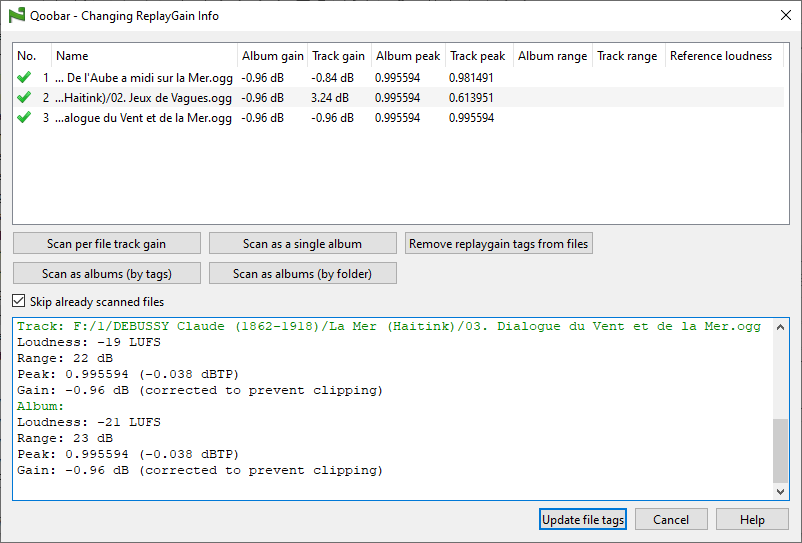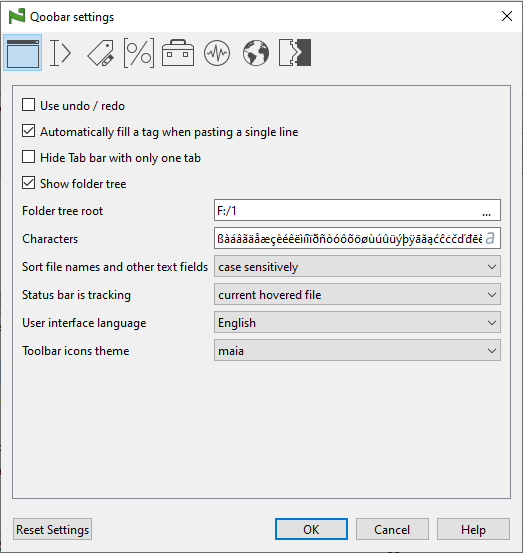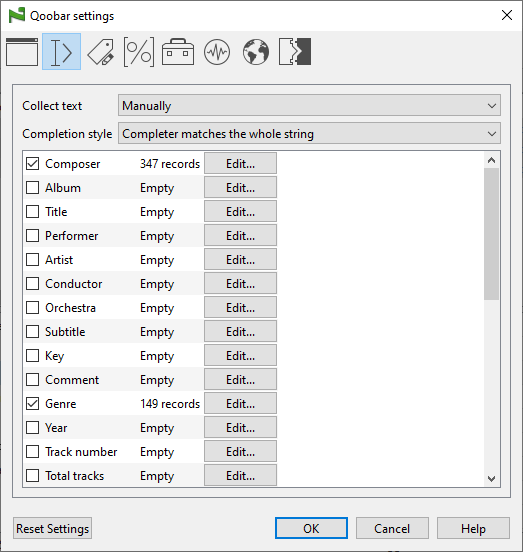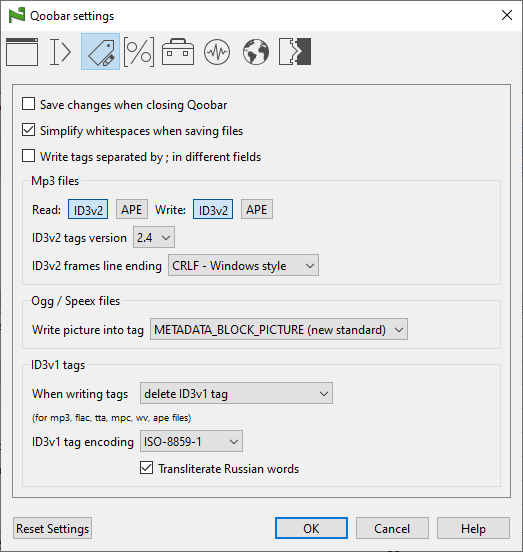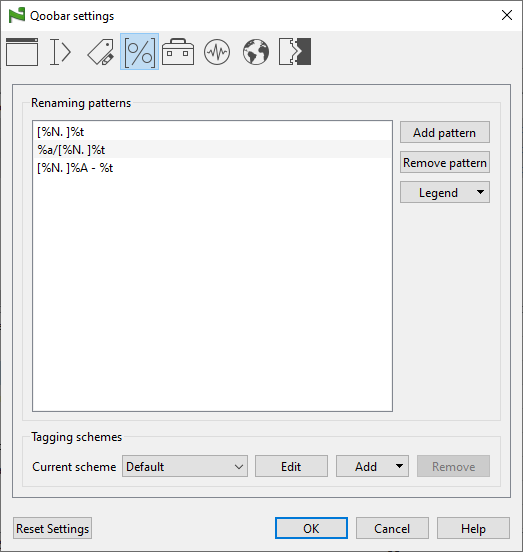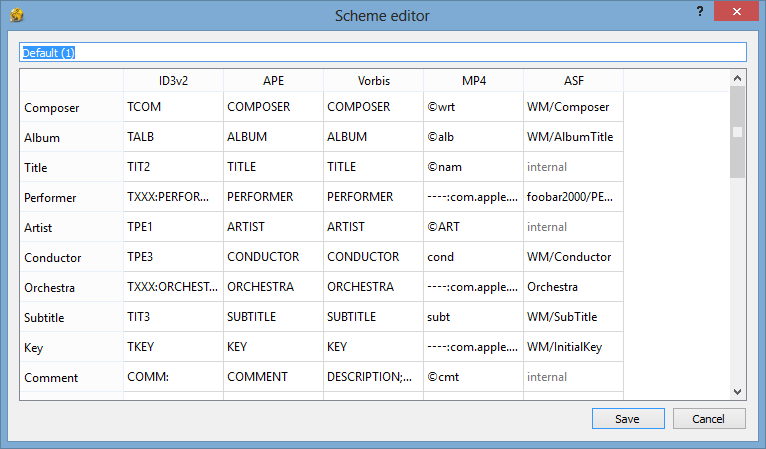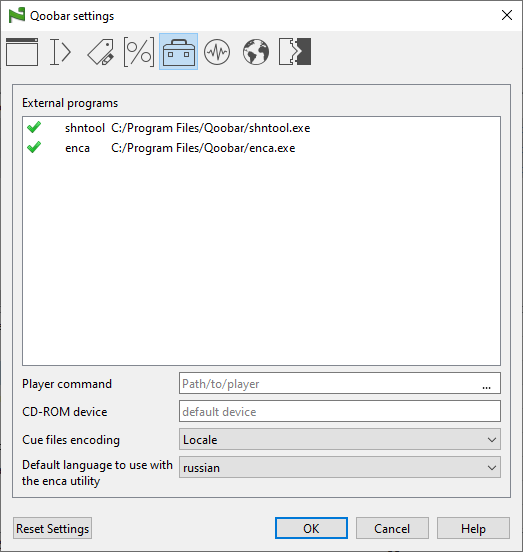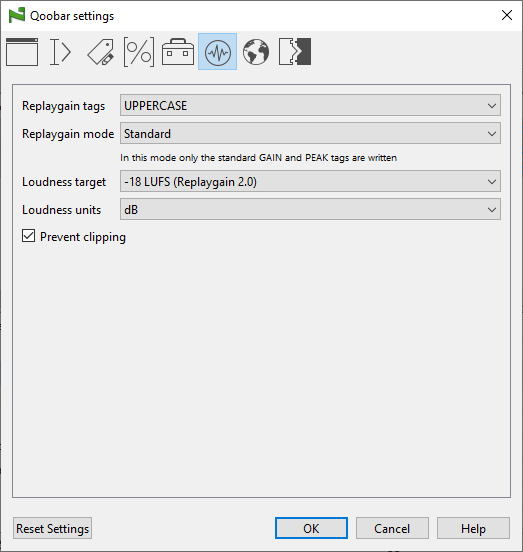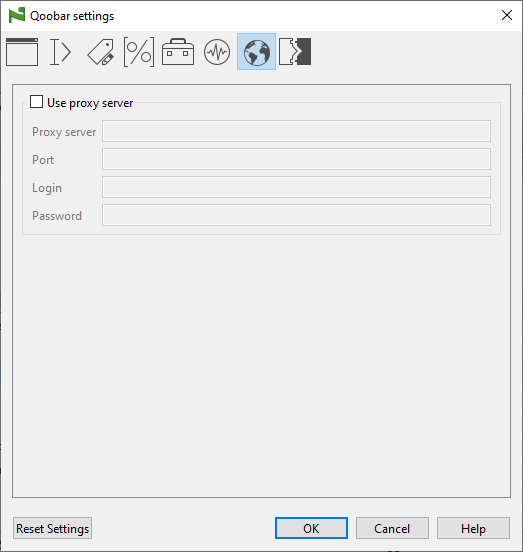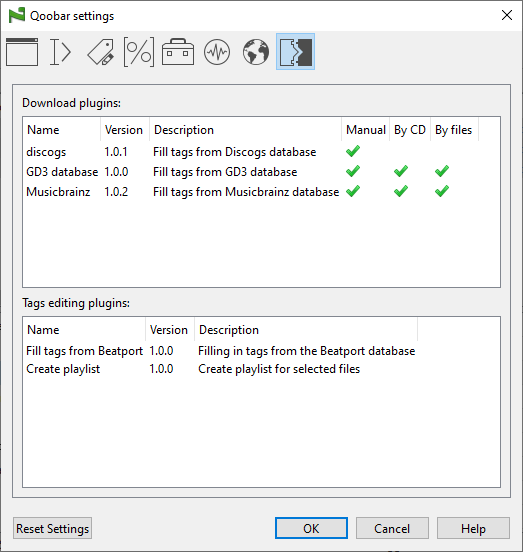First select one or several files in the Files table.
To set one tag for all selected files - click on this tag (f.e. on the "Artist" tag) and type a text.
To edit a tag file by file - double-click the tag.
To number tracks consecutively starting from 1, click on the "Track number" tag, type 1 and press Enter.
Note: If you type 01, track numbers will be two-digit formatted: 01, 02 etc.
To remove some tags select these tags in the Tags Table and press Del.
Note: You can change a tag in the Files table by double clicking on it.
Copying and pasting tags
If you copy only one tag (only one line in the Tags Table), you can paste
it where you want, even if you select other files.
If you copy several tags (Composer and Album, for example),
you can only paste them into the same tags (though you can select other files).
You can paste some text from the clipboard into one selected tag.
Copying selected tags into the clipboard is also possible.
Operations with tags
There is a number of operations that you can use to edit tags.
You can find them in the context menu:
- Change case - changes case to lower, upper, sentence-like etc. The equivalent functions:
$lower, $upper, $caps, $caps2.
- Simplify whitespaces - removes leading, trailing and inner extra whitespaces. The equivalent function:
$simplify
- Remove diacritics - replaces latin characters with diacritical marks by plain ones. The equivalent functions:
$ansi or $ascii
- Transliterate - replaces cyrillic (Russian) characters with latin ones according to
this scheme. The equivalent function:
$transliterate.
- Fix encoding - recodes tags written in local encodings (f.e. Russian Windows 1251, KOI8-R, and CP866) into UTF8.
Qoobar uses enca for guessing the tag encoding, so if you want a better guess, please set a preferable language in the Settings dialog.
The default enca guess language is Russian. The equivalent function:
$recode.
Tags autocompletion
 Qoobar can autocomplete any tag while you are typing some text. This feature is turned on
by default only for composers, genres, and moods. If you want to turn on autocompletion for
other tags, do it in the Settings dialog. You can also edit autocompletion lists in the Settings dialog.
Qoobar can autocomplete any tag while you are typing some text. This feature is turned on
by default only for composers, genres, and moods. If you want to turn on autocompletion for
other tags, do it in the Settings dialog. You can also edit autocompletion lists in the Settings dialog.
There are two modes for adding completion variants: automatic and manual (the default one).
To manually "remember" tag select it and use "collect for future use" action or shortcut
Ctrl+H.
If the automatic collecting is turned on in the Settings dialog, then tags will be collected (remembered for future use) automatically when you press Enter
in the Tags Table or click OK in the Edit Dialog.
Adding your own tag
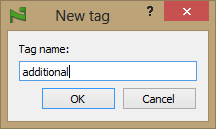 You can add your own tag to the selected files. Click
You can add your own tag to the selected files. Click  or press Ctrl+N. A dialog appears:
or press Ctrl+N. A dialog appears:
Type a tag name with latin characters, spaces and underscores.
Then click OK. The newly added tag will be appended to the Tags Table.
If you don't add something in the newly added tag, it will be lost.
If you want to make this tag permanent (that is to add it to your tagging scheme),
then select the tag row and choose the option "Add this tag to the scheme" in the context menu
of the row name. If the default scheme is used, it will automatically be cloned.
If the tag is already present in the scheme, a warning message will be shown. Tag fields for every tag format
will be constructed by using the tag name, but you can edit them in the Tagging schemes dialog. This is the quickest way to add custom tag to the scheme.
Placeholders and functions
If you want to join different tags together or add some text to a tag just in one operation,
you can make use of placeholders. A placeholder is a variable that contains a tag or other info of one file.
There are two types of placeholders: short and long ones.
Short placeholders begin with '%', followed by one latin letter, for example %t for title, %a
for album, %n for track number, and so on. There are only 44 predefined short placeholders that cover
all standard tags and file properties supported by Qoobar.
Long placeholder is a tag name enclosed in < and >, f.e. <title> or <performer>.
Note that long placeholders are case and spaces insensitive, so <tracknumber> and <Track Number> are equivalent.
You can also use localized tag name instead of the English name, that is if the German language is chosen as the user interface language,
you can use either %c, <composer> or <komponist> for the composer tag.
Unlike short placeholders, long placeholders are not limited by 44 predefined tags: any tag name shown in the Tags Table
can be used as a long placeholder. In other words, every user tag added to the tagging scheme, every new tag added to the Tags Table, and even any
non-standard tag added by other tagging program can be addressed by its name.
Examples: <TSSE> in some mp3 files (Software/Hardware and settings used for encoding) or
<----:com.apple.iTunes:TAGGINGTIME> in mp4 files.
The full list of available placeholders can be found in Appendix 3.
The table below shows some examples of using placeholders in Qoobar.
| Scheme | Source | Result |
|---|
%n. %t |
track numbers:
1
2
3 |
track titles:
title
another title
the third title |
|
track titles:
1. title
2. another title
3. the third title |
%N. %t |
track numbers:
1
2
3 |
track titles:
title
another title
the third title |
|
track titles:
01. title
02. another title
03. the third title |
[%n. ]%t |
track numbers:
1
2
|
track titles:
title
another title
the third title |
|
track titles:
1. title
2. another title
the third title |
appended text - %t |
track titles:
title
another title
the third title |
track titles:
appended text - title
appended text - another title
appended text - the third title |
Functions are similar to those of Foobar2000. They help to automate and simplify work with tags. For example, to simplify files renaming
you can make use of $last_word function, which returns the last word of its argument. So if you have the conductor set to
"Sergiu Celibidache", the rename pattern may look like %a ($last_word(%d))/%N. %t,
which gives us f.e. "Symphony No.6 A-Dur (Celibidache)/01. Maestoso.flac" (guess what composer it is :)).
You can use nested functions: $upper($replace(%A, an, the)) replaces all occurrences of "an" by "the" in the artist tag
and returns uppercased result. $upper($lw(%c)) returns an uppercase of the last word in the composer tag.
You can use brackets [ ] to remove sections if the function result is empty, f.e.
[Section from 2nd to 20th character of album is $section(%a,2,20)] will be removed if the album tag is shorter than 2 characters.
The full list of functions can be found in Appendix 3.
Note: Not all functions work identical to their Foobar equivalents, please test them before saving changes.
Autonumbering
Adding track numbers has never been easier with Qoobar. There are three ways to add a track number or total tracks tag to a file:
- By directly typing the starting track number in the "Track number" field.
- By using the autonumbering function.
- By using the Autonumber dialog.
"Track number" field
The easiest way to add track numbers is to directly use the "Track number" field. Whether in the Tags Table on in the Edit dialog,
type the starting number (f.e. 1 or 01), and every selected file will get the right consecutive track number.
Autonumbering function
This function is extremely useful when you need to add a consecutive track number to other tags (or embed it into some highly structured text).
For example, when you are editing some opera and want to add text like "Act 1. Scene 1." etc.
It can be quite tedious to type all these acts and scenes manually. Instead use the autonumbering function:
{startNumber-endNumber, someNumber:repeatNTimes, someOtherNumber:repeatMTimes; otherStartNumber, m1:k1, m2:k2}
Let's see an example. Suppose we have 'raw' track titles of Debussy's opera "Pelleas and Melisande".
We want to structure them by giving each track title a description: "Act 1. Scene 2. Title" and so on.
So we have:
| Original titles |
What we want to get |
| Je ne pourrai plus sortir de cette forêt | Act 1. Scene 1. Je ne pourrai plus sortir de cette forêt |
| Qu'est-ce qui brille ainsi, au fond de l'eau? | Act 1. Scene 1. Qu'est-ce qui brille ainsi, au fond de l'eau? |
| Interlude (Orchestre) | Act 1. Scene 1. Interlude (Orchestre) |
| Voici ce qu'il écrit à son frère Pelléas: ''Un soir, je l'ai trouvée'' | Act 1. Scene 2. Voici ce qu'il écrit à son frère Pelléas: ''Un soir, je l'ai trouvée'' |
| Je n'en dis rien | Act 1. Scene 2. Je n'en dis rien |
| Grand-père, j'ai reçu en même temps que la lettre de mon frère | Act 1. Scene 2. Grand-père, j'ai reçu en même temps que la lettre de mon frère |
| Interlude (Orchestre) | Act 1. Scene 2. Interlude (Orchestre) |
| Il fait sombre dans les jardins | Act 1. Scene 3. Il fait sombre dans les jardins |
| Hoé! Hisse hoé! Hoé! Hoé! | Act 1. Scene 3. Hoé! Hisse hoé! Hoé! Hoé! |
| Vous ne savez pas où je vous ai menée? | Act 2. Scene 1. Vous ne savez pas où je vous ai menée? |
| C'est au bord d'une fontaine aussi qu'il vous a trouvée? | Act 2. Scene 1. C'est au bord d'une fontaine aussi qu'il vous a trouvée? |
| Interlude (Orchestre) | Act 2. Scene 1. Interlude (Orchestre) |
| Ah! Ah! Tout va bien, cela ne sera rien | Act 2. Ah! Ah! Tout va bien, cela ne sera rien |
| Je suis... je suis malade ici | Act 2. Je suis... je suis malade ici |
| Il est vrai que ce château est très vieux et très sombre | Act 2. Il est vrai que ce château est très vieux et très sombre |
Let's compose our functions according to what we want to achieve:
Acts number from 1, Act 1 lasts 9 tracks, Act 2 lasts 6 tracks, so for the acts we have:
{1, 1:9, 2:6}
Act 1 consists of 3 scenes, where Scene 1 contains 3 tracks, Scene 2 contains 4 tracks, and Scene 3 is 2 tracks.
Then Act 2 begins, so we need to start numeration from the beginning (thus adding ';').
Scene 1 of Act 1 contains 3 tracks, so for the scenes we get
{1-3, 1:3, 2:4, 3:2; 1-1, 1:3}
We do not need Scene 2 in Act 2, so we should use square brackets to exclude this text:
Act {1, 1:9, 2:6}. [Scene {1-3, 1:3, 2:4, 3:2; 1-1, 1:3}. ]%t
Type this text into the title tag to achieve our goal!
Tip: You can omit commas: {1-3 1:3 2:4 3:2; 1-1 1:3}.
More examples: we have selected 7 files
| Function | What we get file by file |
|---|
{} | 1, 2, 3, 4, 5, 6, 7 |
{1} | 1, 2, 3, 4, 5, 6, 7 |
{2} | 2, 3, 4, 5, 6, 7, 8 |
{1-5} | 1, 2, 3, 4, 5, _, _ |
{2-5} | 2, 3, 4, 5, _, _, _ |
{1, 1:2} | 1, 1, 2, 3, 4, 5, 6 |
{1, 1:2, 2:3} | 1, 1, 2, 2, 2, 3, 4 |
{1-3, 1:2, 2:3; 1, 1:2} | 1, 1, 2, 2, 2, 1, 1 |
Here _ means "nothing" and not underscore.
Autonumber Dialog
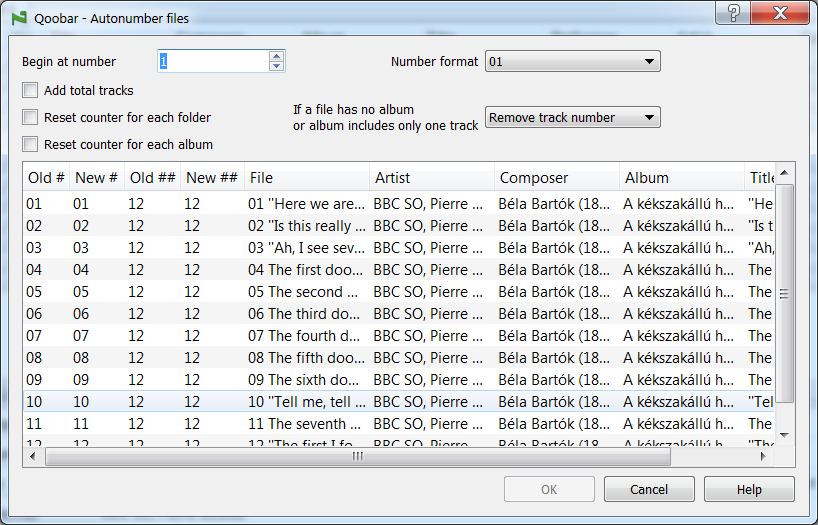 The Autonumber Dialog simplifies adding track numbers and total tracks to files in case you have selected files from different folders and albums.
The Autonumber Dialog simplifies adding track numbers and total tracks to files in case you have selected files from different folders and albums.
To open it, choose the Tools → Autonumber selected files... menu item.
The dialog options:
- Begin at number: lets you to change the starting track number.
- Number format: choose between one-digit, two-digits and three-digits track numbers.
- Add total tracks: if this option is set, the dialog will also update/change the total tracks tag.
- Reset counter for each folder: if this option is set, Qoobar will reset the track number
to the starting one if it encounters a file from the different folder.
- Reset counter for each album: if this option is set, Qoobar will reset the track number
to the starting one if it encounters a file from the different album.
- If a file has no album...: this option manages the "single" or "orphaned" files, that is files with no album tag set
or albums that contain only one track.
The old and new track numbers are shown in the table. You can edit them manually by double-clicking on the field,
though only "New #" and "New ##" will be used.
The Edit Dialog
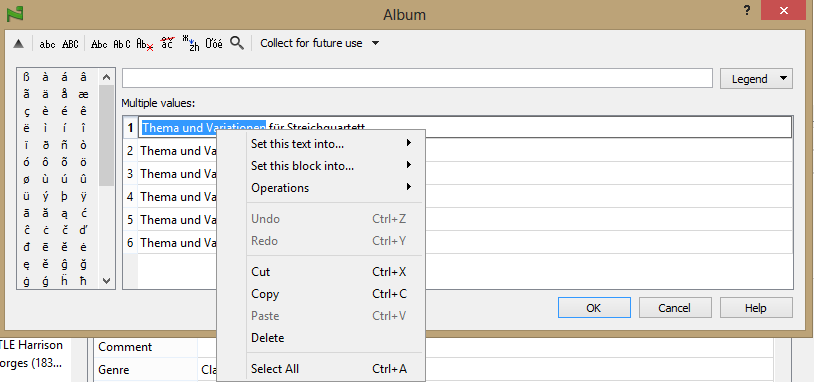 When you double-click any tag in the Tags Table, the edit dialog appears.
When you double-click any tag in the Tags Table, the edit dialog appears.
The toolbar contains buttons for quick access to tags editing operations described earlier.
The button Collect for future use helps adding tag values to autocomplete lists.
The first line: this line contains the text that will be written into all selected files.
On the image all titles are different, so the first line is empty.
If you type some text here, it will overwrite the values below.
Multiple values: different text for different files. If you change any line here, the first line will be cleared.
The left-most panel contains various characters with diacritics. It can be hidden if not necessary.
Also a list of characters can be edited in the Qoobar settings.
To insert some character place the cursor where needed and left-click the character.
To insert its upper case variant click the character while holding down the Shift key.
The Legend button gives you access to placeholders which can be used just like here.
Autofilling track numbers. If you are editing track numbers you can autonumber them
by typing 1 in the first line. If you are editing other tags please use the autonumbering function.
Using tags autocompletion: The autocompletion is available here as well.
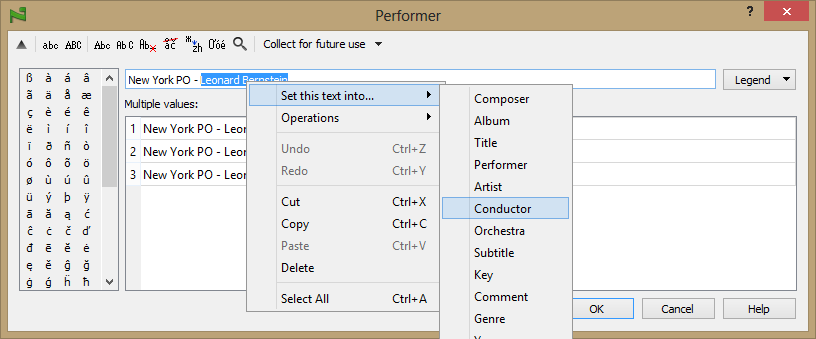 Filling in tags: To quickly "parse" parts of a tag into other tags use the context menu:
Filling in tags: To quickly "parse" parts of a tag into other tags use the context menu:
Set this text into...: sets the selected text into all selected files as 'Artist' (f.e.). It is equivalent to as if you copy the selected text and manually paste it into the artist tag.
Set this block into...: extracts similar texts in other rows of 'Multiple values' and sets them as 'Artist' (f.e.).
To see what text will be selected in other rows select some text in the current row while holding down Ctrl key.
This menu option is aimed as an alternative to using the Fill dialog. It only allows parsing one tag at a time.
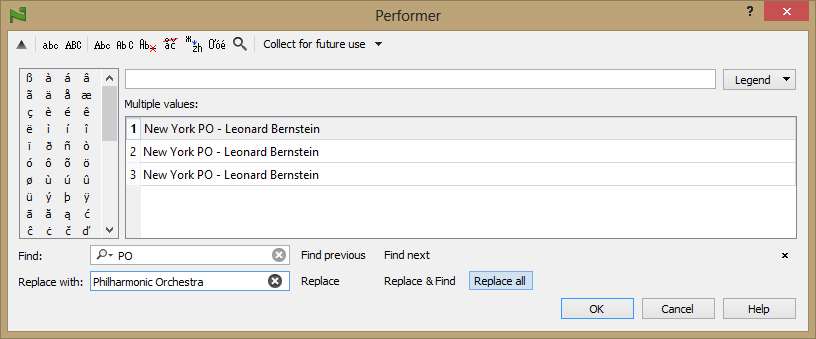 Find & Replace: Press Ctrl+F to show the find & replace panel.
Find & Replace: Press Ctrl+F to show the find & replace panel.
You can navigate through the table by clicking buttons or using shortcuts:
F3 (Ctrl+G in Linux) - find next,
Shift+F3 (Shift+Ctrl+G in Linux) - find previous.
The Options button allows you to specify some search options:
- Case Sensitive
- Whole Words Only
- Use Regular Expressions. The available regular expressions are
listed in Appendix 4.

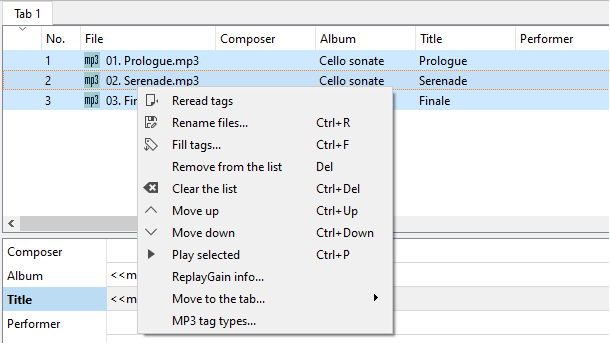

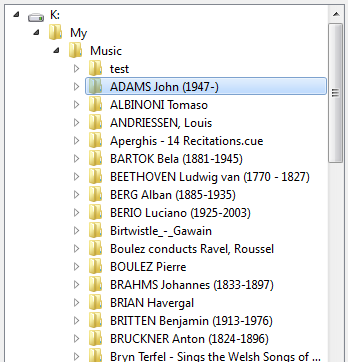
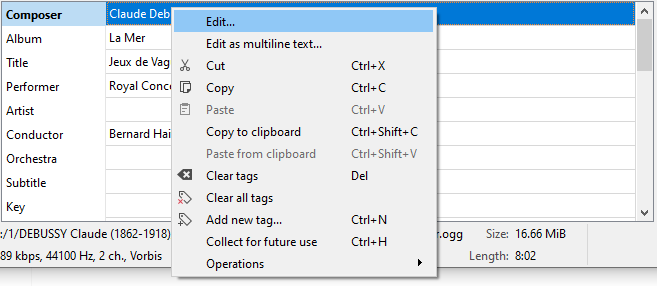

 or shortcut
or shortcut  or shortcut
or shortcut 
 .
.


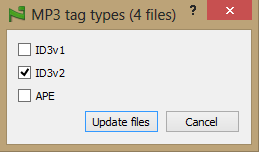
 .
. or press
or press  . It removes all tags which Qoobar can read.
You can undo the deletion.
. It removes all tags which Qoobar can read.
You can undo the deletion.

 or press
or press 



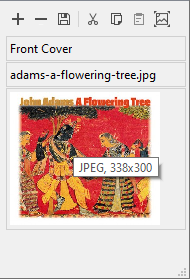
 .
.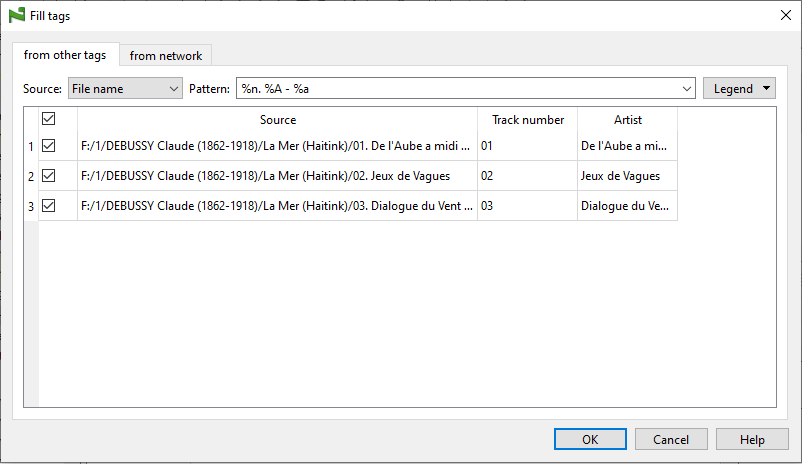
 or press
or press 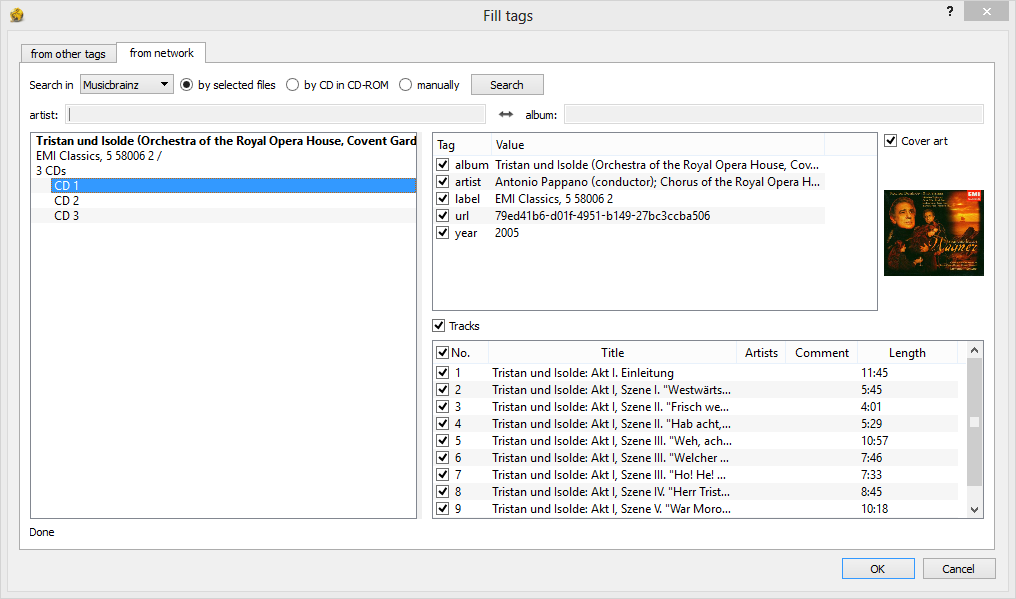
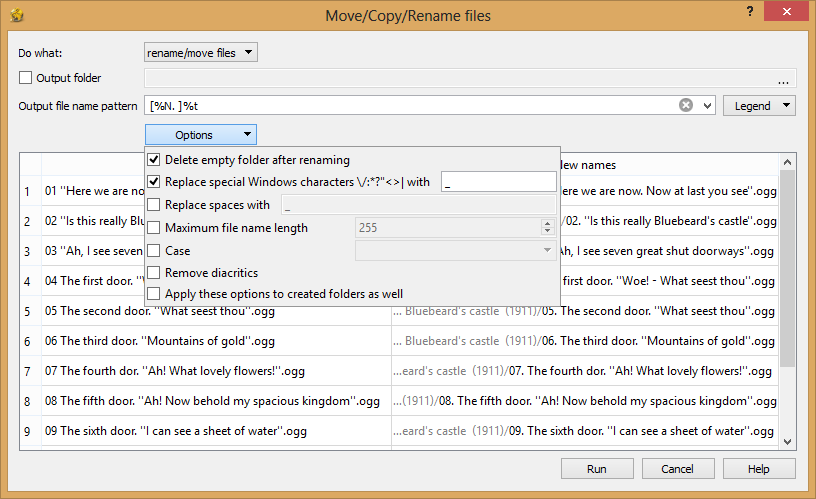
 or press
or press 